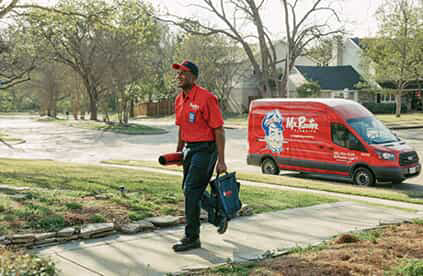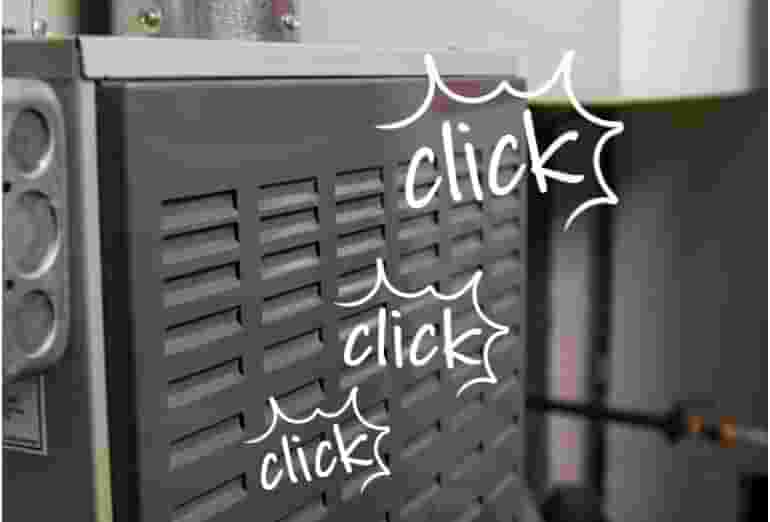A
Acid Waste Piping: Pipes made out of material such as glass or polyvinylidene fluoride that is resistant to acid corrosion, which are used to carry away acidic waste in commercial applications such as laboratories, hospitals and printing presses.
Acrylic: A strong, durable thermoplastic that is used as a surface material for plumbing fixtures such as bathtubs and shower surrounds when combined with a fiberglass backing. Plexiglass shower doors are also made with acrylic.
Anaerobic: The ability to live or exist in the absence of free oxygen, such as microorganisms that break down waste matter in septic tanks.
Anti-Scald Valve: A device that controls the balance of hot and cold water in a shower to prevent a burst of scalding hot water in the event of a sudden pressure drop.
Auger: A flexible metal cable with a cutting component on the end to clear drain blockages. Some augers are motor-driven, especially the longer ones used to clear clogs in underground drain lines.
B
Backflow Preventer: A device that stops grey water from reversing direction and traveling into water supply lines. Backflow preventers are commonly used for handheld shower nozzles, pull-out kitchen faucets and sprinkler systems, along with other similar fixtures.
Backwater Valve: A sewer line valve that prevents sewage from reversing direction and traveling back into a building so there's no risk of fecal contamination in the potable water supply.
Ball Passage: A measurement of the size of a toilet trapway based on the size of ball that can fit through it. A trapway is typically an eighth of an inch larger than the maximum size of ball that can pass through it.
Basket Strainer: A small mesh basket or a cup with holes and slats, usually made of stainless steel, that fits over a sink or shower drain to prevent debris such as food scraps and hair from getting into the drainage system and causing a clog.
Brackish Water: A mixture of fresh and saltwater that is non-potable.
Branch Vent: A vent pipe that connects either one or multiple plumbing vents to a vent stack.
C
City Sewer: A large, industrial sewage disposal system operated by a municipality to serve the residential and commercial properties within city limits.
Cleanout Plug: A conveniently-located metal or plastic plug in a drain pipe or vent that can be removed by a plumber to give them access to clear out a clog or blockage deep in the drain line.
Clog: An accumulation of thick, wet material that is partially or completely blocking the flow of water in a pipe or drain. Clogs are usually composed of several different materials that have become tangled up in a clump. For example, a clogged kitchen sink is often the result of food scraps, grease and even other debris like hair.
D
Diaphragm: A flexible membrane inside a valve that controls the flow of liquids or gas moving between open and closed positions as needed. In a plumbing valve on a water supply line, the diaphragm prevents debris and sediment from building up inside the valve.
Drip Leg: Also referred to as a sediment trap, this is a stub-ended pipe that sits at the lowest point of a gas line to collect sediment, condensation and other debris so it can easily be removed.
E
Energy Factor (EF): A measurement of efficiency for appliances and fixtures such as water heaters, washing machines and dishwashers. The metric has different definitions depending on which type of appliance it is calculating efficiency for. A higher energy factor value indicates a more efficient appliance or fixture.
Energy Star: An energy conservation program that is jointly operated by the U.S. Environmental Protection Agency and the U.S. Department of Energy. Part of its function is to rate and certify products that meet certain standards of energy conservation, including plumbing-related appliances and fixtures such as dishwashers and water heaters.
F
Flex Coupling: A rubber connector that is used to join two pipes of differing materials, such as cast iron and PVC.
Floor Drain: A drainage opening set flush in a floor, often at the lowest point of a gently sloping floor, in a shower, laundry room or other area that is prone to moisture exposure to drain water off the surface of the floor.
Frozen Pipe: When the standing water inside a pipe freezes because the pipe was not insulated adequately. This is a common winter plumbing problem that can cause major issues as the freezing water expands and builds pressure, causing the pipe to burst.
G
Gasket: A rubber ring that forms a watertight seal when placed between connecting flanges.
Grey Water: Domestic wastewater in homes or commercial properties that comes from sinks, washing machines, dishwashers, showers and other sources that are not contaminated with human waste. Grey water can be recycled for non-potable purposes such as flushing toilets or in some cases, irrigation.
H
Hard Water: Water with high levels of concentrated minerals such as magnesium and calcium. Hard water is generally potable, but it causes a lot of wear and tear damage on plumbing systems because mineral deposits build up inside pipes and fixtures and impede their operation.
Heat Exchanger: A coil of copper or stainless steel tubing that divides a heat source from the fluid that is to be heated.
Hubless: A cast iron drainage pipe with neoprene gaskets and clamps called mechanical joints, which is sometimes referred to as a no-hub because it doesn't have a hub or "bell" on the end.
I
Inside Diameter (ID): The diameter of the inside opening of a pipe, not including the thickness of the pipe walls.
M
Maximum Acceptable Concentration (MAC): The maximum allowed level of a potentially harmful contaminant such as lead in potable water, as determined by federal guidelines.
Main: The main pipe that connects interior and exterior plumbing systems. A private plumbing system typically has two mains: a water supply pipe that carries fresh, potable water into the building and a sewage line that carries wastewater and sewage to the city sewer system or a septic system.
N
Nipple: A short piece of pipe, threaded on both ends, that connects a pipe to threaded fittings, valves or equipment.
Non-Potable Water: Water that is unsafe to use for drinking, cooking, bathing and other domestic purposes because it is contaminated with fecal matter, toxic chemicals, bacteria, parasites or other harmful substances.
O
O-Ring: A small, flexible, watertight seal between pressurized fittings. They can wear out and may need replacement to maintain their seal. A deteriorated O-ring is the most common cause of a dripping faucet.
Outside Diameter (OD): The full diameter of a pipe from the outside edge, including the pipe walls.
P
Plunger: A tool with a long handle and rubber suctioning device at the end that is used to push and pull clogs out of toilets or drains by forming a seal and extracting it with suction. Plungers with a cup-shaped end are for flat drains in sinks, showers, bathtubs and floors, while bell or ball-shaped plungers are for toilets.
Polybutylene (PB): In plumbing, it is flexible plastic tubing that is used in water supply systems. They were used in construction in the 90’s but are not used anymore due to the high likelihood of developing leaks.
PSI (Pound-Force Per Square Inch): A measurement of the pressure that results from one pound-force applied to one square inch of surface area. PSI is often used to measure water pressure; for example, the typical pound-force per square inch of a household water system is between 40 and 60.
P-Trap: A curved piece of pipe underneath sink, shower and bathtub drains that remains filled with water to prevent foul, gaseous odours from escaping the drain.
PVC (Polyvinyl Chloride): A white (or light beige), rigid, plastic pipe that is used for non-pressurized vent, drainage and waste systems.
R
Raw Water: Water from a natural source that has not been treated and may or may not be potable.
Reamer: A tool used to remove burrs from the interior of pipes, or from holes that have been drilled in metal.
Runs: Secondary sections of pipe that go from a drain to the soil stack, or from the water supply line to fixtures such as sinks and showers.
S
Septic System: A private sewage removal system that is not connected to a municipal or commercial sewage management system, normally composed of a septic tank, septic field and piping.
Sewer Gas: Toxic and potentially combustible gas that is the byproduct of decaying matter in a sewer system. It may include ammonia, hydrogen sulfide, methane, carbon monoxide and sulfur dioxide.
Shutoff Valve: A valve that can be manually closed to stop water supply to a building (when it's located on a water main) or a specific appliance or fixture, such as a sink or water heater, that needs repair.
Soil Stack: The drain line that connects to all branch lines and carries waste to a building’s sewer main; this is often the biggest vertical drain line in a building.
Sump Pump: A protective device designed to prevent basement flooding, in combination with a sump pit. The pit is located below basement level, so it fills with water first. When the water reaches a certain level, the sump pump turns on and pumps the water out of the house where it can be safely disposed of.
T
Tailpiece: A short length of pipe that runs between a fixture and a P-trap.
T-Bolts: Large anchor bolts that secure a toilet to the floor. They are sometimes referred to as toilet bolts or closet bolts, and there is typically one on either side of the toilet.
Thermocouple: A thermoelectric device on a gas-powered water heater or appliance that turns off gas supply when it senses that the pilot light has gone out, to avoid releasing natural gas into the building.
Thermostatic Valve: A valve with a thermal actuator that regulates temperature and pressure fluctuations by adjusting the ratio of cold to hot water to maintain a desired temperature setting.
Trenchless Sewer Repair: This term applies to several methods of repairing a buried sewer line without accessing it by digging a trench. Trenchless sewer repair or replacement techniques include pipe relining and hydraulic pipe bursting that are far less invasive and time-consuming than conventional sewer line repair methods.
U
Union: A plumbing fitting that joins sections of pipe together so they can be decoupled without cutting through the pipe.
V
Valve Seat: The stationary part of a valve that prevents water flow when it comes in contact with the moveable part of the valve.
Volumetric Flow Rate: The volume of fluid that passes through a plumbing system in a specific amount of time, also known as volume velocity.
Voral Tube: A flexible steel hose that connects a handheld shower head to the water supply line.
W
Water Softener: An appliance installed on a water main that removes minerals such as calcium and magnesium from a building's potable water supply to soften hard water.
Wax Ring: A ring that fits between the hole in the bottom of a toilet fixture and the flange that connects to the drain pipe to form a pliable seal between the two.
WC (Water Closet): Water closet is an old-fashioned term for a bathroom, and it is often noted as "WC" on a plumbing schematic document.
Working Pressure: The normal maximum operating pressure of a plumbing component or fixture such as a faucet or valve.
Call phone number(403) 640-7789 24/7 Emergency Services
 Click to call
Click to call




